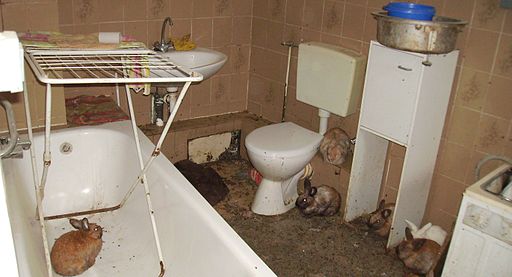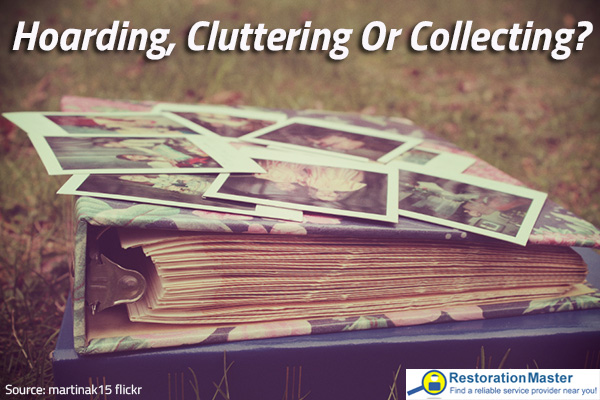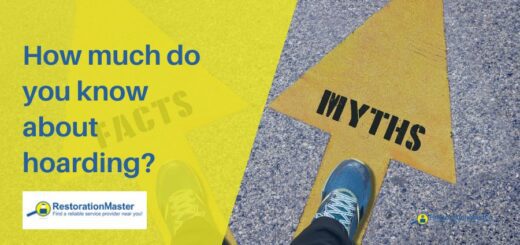The Different Types of Hoarding Disorders
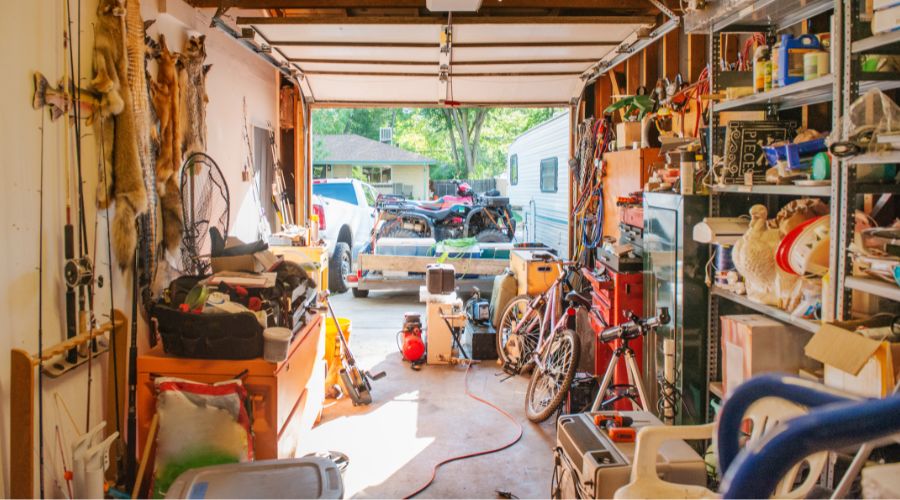
Hoarding disorder is a complex mental health condition characterized by persistent difficulty discarding or parting with possessions, regardless of their actual value. The clutter created by hoarding can leadLead is a heavy metal that can be toxic to humans, especiall... More to severe living conditions, impacting daily life and overall well-being. Within this disorder, there are various types and manifestations, each with its unique challenges. Understanding these types can help in identifying and addressing specific hoarding behaviors.
Hoarding Behaviors and Types of Disorders
The main types of hoarding disorders include collectors, researchers, non-wasters, animal hoarders, over-sentimental hoarders, and typical hoarders.
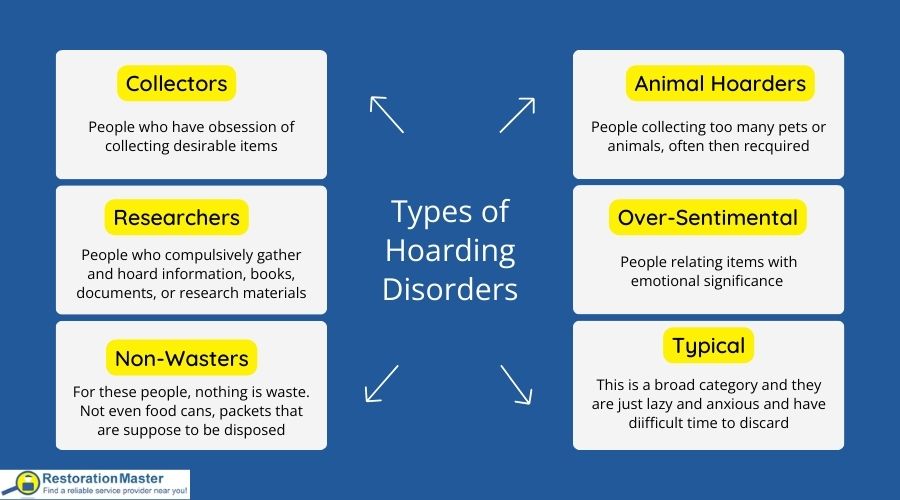
Collectors
It is very easy to cross the fine line between a valuable collection and a worthless pile – after all, beauty is in the eye of the beholder and neither aesthetic, nor sentimental value can be clearly defined. That’s why home décor can easily turn to clutter and eventually to a hoard. More often than not, collectors who feel the compulsive need to constantly acquire new items have lost their ability to distinguish between precious pieces and worthless junk which is typical of hoarding disorder. Their collections gradually lose their initial purpose and instead of a source of pride and joy, they become a source of embarrassment.
Real collectors appreciate and enjoy every single article they possess while hoarders may not even know exactly what they have accumulated. True collectors organize their items in a tidy and systematic manner and are genuinely excited about each of them. Besides, they are always happy to show their precious collections to visitors and can explain the meaning, origin and value of all the pieces in details. Hoarders, on the other hand, are ashamed of the filth and chaos in their properties and never invite people over. A moment comes when the new valueless items they keep bringing home become completely unrelated to the initial collection and have no meaning whatsoever. The process continues until the free space diminishes to an extent that life becomes extremely difficult and the walls are literally closing in on hoarders.
Realizing the truth is usually very painful for these people, so they need to be convinced that their collections are complete and they have to get rid of all the unrelated and useless items.
Related Read: Difference Between Hoarding Clutter and Collecting
Researchers

It is not rare for those who love reading and learning new things to gradually pile tons of books, encyclopedias, magazines and newspapers in their homes. This is especially typical of people who used to do a lot of researches as part of their jobs, studies, and everyday life. Most of the materials may indeed contain some interesting, amusing or important information, images, ideas, and so on. However, keeping a magazine for years just because of an artistic picture on one of its pages or a funny article you enjoyed reading once is not practical. Reading materials are heavy and voluminous – they take up a lot of space and it is really easy to forget about an old book stacked below tens of others on a similar topic. Besides, good and worthy publications often get mixed with mediocre materials and editions on trivial topics which get outdated quickly and lack real value.
Remember – there is no point in having a large home library unless it is orderly and consists of high quality reading materials, be they informative, amusing, or imaginative. All the items should be neatly arranged on bookshelves, so that you can see them and easily find the ones you need.
The same principle applies to DVDs, CDs, brochures, manuals, textbooks, albums, and other materials. Even electronic gadgets that get outdated in the course of several years should not be kept just because they were useful once – implement the golden rule “one in, one out” every time you acquire a new item, be it a music player or a science-fiction novel. Storing useless items because you don’t know what to do with them will do you no good, it is just one of the signs of hoarding behavior.
Non-wasters
One of the main excuses that hoarders have for their behavior is that they preserve old and useless items in order not to waste anything. Two types of hoarders can be distinguished in this group:
Recyclers
Some people claim that they accumulate no longer needed items with the intention to find them a new purpose. They plan to repairRepair is the act of fixing or restoring damaged property, m... More slightly damaged pieces and to re-use whatever is possible, so that the materials are not wasted in vain. What is more, recycling helps preserve natural resourcesResources include tools, personnel, equipment, and materials... More and keep the environment clean. The only problem occurs if they never actually recycle the old items and just keep piling them up in their homes. And when the moment comes that their properties turn into storage units and their functionality is lost, the line into hoarding has been crossed. Convincing recycler hoarders to take all the accumulated materials to a recycling center for some cash would provide them with the means to get rid of all the junk and to restore order in their homes but achieving this is very difficult.
Food Hoarders
Many people prefer to keep some food supplies for rainy days. They ensure their peace of mind in case of an emergency or a real shortage of money – there will be enough food to last for a certain difficult period of time.However, when the amount of stored food is beyond what anyone could ever consume over the course of several years, the situation is defined as hoarding behavior. Usually most of the food expires before it is consumed and the accumulation of spoiled goods can even result in sanitary issues and health problems. Even though food hoarders mean to preserve food, not to waste it, they cannot consume all the groceries and they are literally wasted. Making hoarders realize that truly needy people could have actually purchased and consumed the food might help them cope with their problem but a very delicate approach is required.
Animal Hoarders

The number of animals people keep in their properties is not necessarily indicative of animal hoarding – it is the lack of proper care that defines the disorder. In cases in which a person has a couple of dogs in the backyard but provides them healthy food, adequate housing, veterinary care, and sanitary living conditions, hoarding is out of the question. Loving care and safe environment is all that pets need to be the playful, cheerful, and reliable companions many people adore.
However, even if the animals are genuinely loved, they may not receive adequate care. Animal hoarders usually love their furry companions but their lack of insight can create a dangerous environment both for themselves and for their pets. Naturally, the more animals there are in the house, the more care, time, and resourcesResources include tools, personnel, equipment, and materials... More are required for raising them properly. Hoarders, however, simply can’t tend to the animals’ needs. They believe themselves to be generous caregivers and/or animal rescuers, but they actually put their companions at risk. The living conditions in the poorly maintained hoarders’ homes deteriorate quickly, causing hazardous threats as a result of insect infestation, bacteria growth, etc. The timely intervention of specialized hoarding cleaning services is the only viable option in such situations.
Related Read: Risks Related To Animal Hoarding
Over-Sentimental Hoarders
Hoarding is often triggered by a very stressful or traumatic experience and the person involved may have suffered a bitter loss. As a result, precious memories become associated with otherwise worthless items, rendering them priceless. Unfortunately, hoarders can’t properly categorize things according to their importance and feel tortured by the constant fear of losing something valuable. This makes them store everything safely in their homes to the point when they no longer remember which item is associated with what and their residences become a total mess. This fear may be the direct result of:
- The loss of a beloved person – hoarders will never let go of anything that belonged to people who mattered to them, whether they are already deceased or have left them for one reason or another.
- The end of a consequential or enjoyable period/event – hoarders will keep every items associated with a happy period in their life. Especially if they have been forced to leave an occupation they enjoyed, or a place they cherished, or if anything meaningful for them has come to an end, they will keep all the associated but already useless pieces in their homes and will refuse to throw anything away.
- The long-lasting craving for something – if they lacked certain items in earlier stages of their lives, hoarders will accumulate as many of these things as possible.
Anyone may feel frustrated to get rid of an item reminiscent of something important or someone special. However, burying yourself in nonfunctional objects will neither change the past, nor improve the future. Try to keep only items with very high sentimental value – ones that evoke powerful emotions and mean a lot to you.
Typical Hoarders
As already mentioned, typical hoarding is attributed to obsessive compulsive disorder. It is characterized by severe indecisiveness that prevents hoarders from throwing any of the valueless items that they have acquired over time. What is worse, this type of hoarder neither organizes, nor cleans their home. As a result, their places become messy and dirty, prone to moldMold is a type of fungus that grows in damp or humid conditi... More and bacteria growth, often infested with insects and/or rodents. The poor sanitary conditions and the increased risk of fires (most of the accumulated stuff is very flammable) require immediate hoarding cleaning but it must be performed with great delicacy and patience in order to actually help the hoarder.
The different types of hoarding behavior are determined by the various experiences, problems, and anxieties people have been faced with during their lives. Understanding the mind of a hoarder is extremely difficult because the reasons for their behavior may vary greatly – from unresolved childhood issues to a recent psychological trauma. What matters is to find the right approach to help them overcome their fears and realize what is wrong, so that they can come up with a solutionA solution is a homogeneous mixture of two or more substance... More and move on with their lives.










